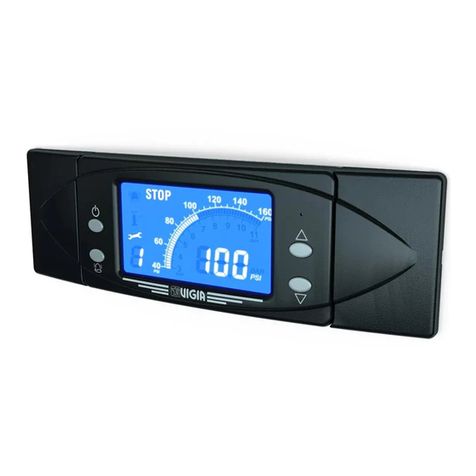
A01.01886-8 REV: 001 VALIDITY: 28.11.22
SECTION 1: INTRODUCTIONSECTION 1: INTRODUCTION
Using the wrong tire pressures has a signicant
negative impact on a vehicle's operational ability,
from increased tire wear and fuel consumption
to soil compaction and increased driver fatigue.
Driving with the proper tire pressures for load,
speed and road conditions, maximizes vehicle
mobility and performance in demanding terrain
and conditions, reduces overall operating costs,
improves fuel consumption, increases traction
and safety.
1.1: PURPOSE AND SCOPE OF THE
MANUAL
This manual explains how to install and repair
the VIGIA NM 444 ELECTRONIC TIRE
CALIBRATOR, but also includes a basic overview
of system components and operation. It also
provides the necessary information on installation,
full system operation, and troubleshooting.
SECTION 2: ELECTRONIC TIRESECTION 2: ELECTRONIC TIRE
CALIBRATORCALIBRATOR
2.1: FUNCTION
The system allows you to calibrate the tires to a
preset maximum or minimum cold pressure, per
circuit, optimizing the tire pressure with respect
to the load and speed of your vehicle.
2.2: APPLICATION
The VIGIA NM 444 System is particularly useful
when installed on heavy transport vehicles and
especially those that are exposed to dierent
types of roads (including o-road) and conditions
of use including agriculture, livestock, forestry,
transportation fuel, mining and construction.
Very Important: The NM 444 System
can be installed in any unit that has
an air compressor and a power
supply voltage of 12 to 24 V., but its
correct operation will depend on:
• The capacity of the unit's air com-
pressor.
• The number of tires to be con-
trolled in the two pressure states.
• The pressure values at which it is
required to calibrate the tires.
PAGE. 3 OF 55




























